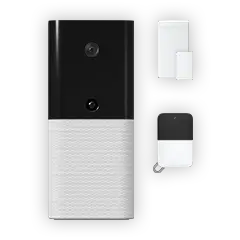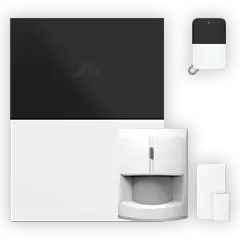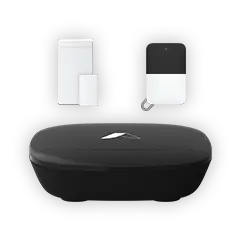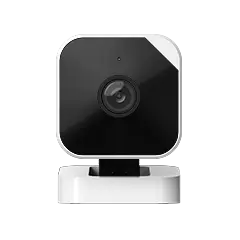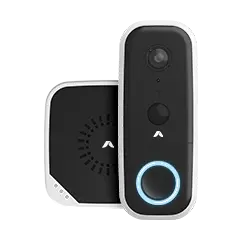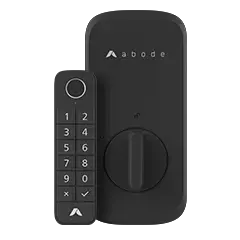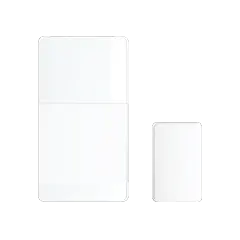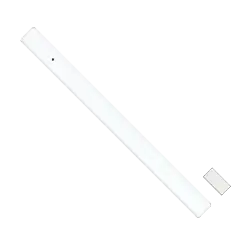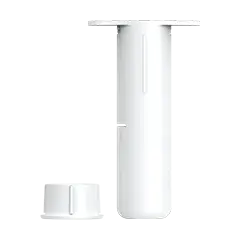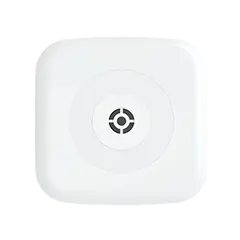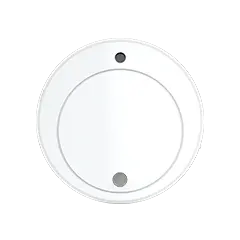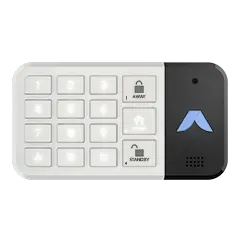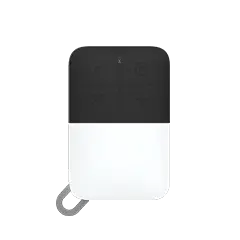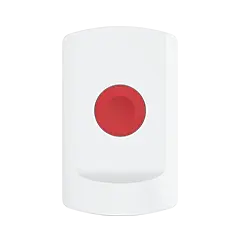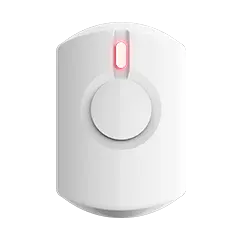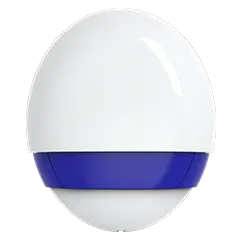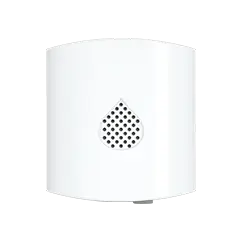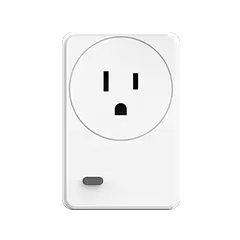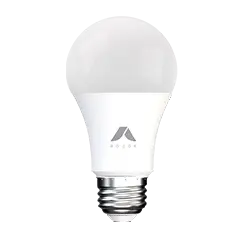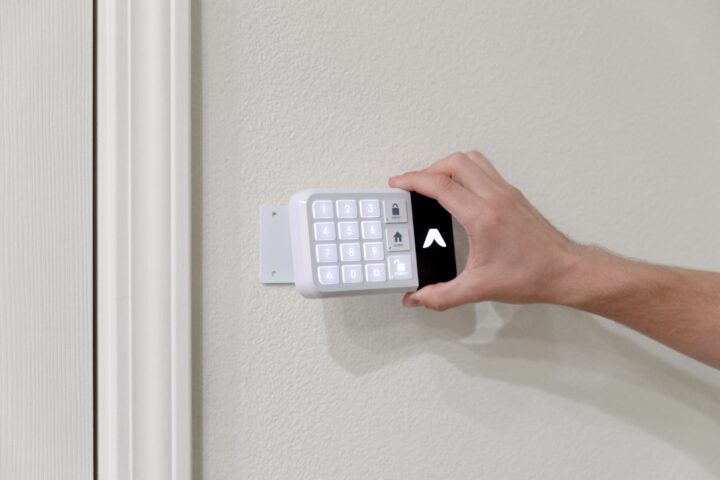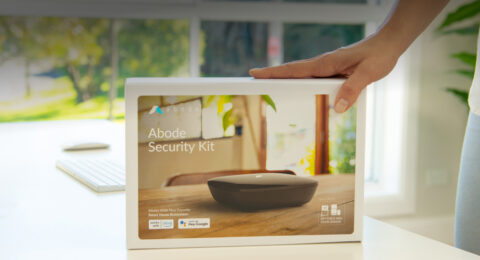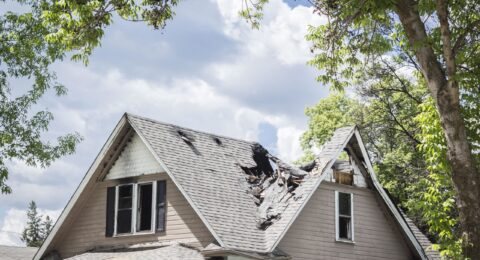Security SystemsCreate the perfect smart home security system
 Abode September 29, 2021
Abode September 29, 2021 When it comes to protecting your home you certainly aren’t short of options in today’s day and age with multiple providers offering solutions in both the traditional and DIY space. If you opt for a DIY system without an in-home consultation there are a few key things to keep in mind to ensure that you have a complete home security solution.
Cover the most common entry points

According to the Federal Bureau of Investigation, a home burglary happens in the United States every 13 seconds. The most common entry point that burglars enter through is the front door (34%), followed by the first-floor window (23%), and the back door (22%). If burglars see any security weakness in these first-floor entry points, they take advantage of it.
An ideal home security solution covers all the most vulnerable entry and exit points inside your home. Invest in a door sensor for every ground-level door with outdoor access in your home like the front door, garage door, glass sliders, etc.
As far as windows go, provided you leave them shut and locked your priority should be protecting against glass breaks to gain entry. Most glass break sensors come in vibration/shock and acoustic varieties. The latter tend to be more economical as you can cover entire rooms as opposed to individual windows with vibration-based sensors. Like door sensors, the ground level should be your priority. It’s very rare that a burglar would take the time and risk the attention of scaling a ladder up your house to gain entry via the second floor. You should plan on deploying one acoustic glass break sensor per room on your ground level floor to protect all windows. Don’t forget about smaller windows to the basement as these are accessible via the ground level.
Invest in an all-in-one camera

When buying security cameras, you need to pick a camera that packs a lot of features instead of buying one that only has one or two tricks up its sleeve. Choose a wired camera that combines features such as flexible mounting options, wide angle lenses, high resolution, ability to capture images in low light, and motion detection, among others. Be sure to look for cloud-based recording to ensure that a burglar who damages or makes off with a camera doesn’t end up taking the footage as well.
Where you put your cameras is also critically important to their effectiveness. A combination of indoor and outdoor coverage is ideal. . Inside, put your cameras in highly-trafficked areas that it would be next to impossible for someone to enter your home and avoid like common areas, entryways, and stairwells. Outside, position them at entry points like the front door and rear slider doors.
Be notified of movement

There are many means of breaking and entering into a property, and if a potential intruder manages to succeed, your next line of defense should be motion sensors that sense the intruder’s movement inside your home. These motion sensors should be able to detect body heat or can be triggered by going within the range of infrared light it emits. Similarly to security cameras, install these sensors in key areas that it would be impossible for a burglar to avoid if they somehow gained entry into your home such as hallways, stairwells, entryways, and open areas like living rooms.
Again, your priority here should be the ground level. If you want to protect the upstairs as well, focus on common areas like hallways where a burglar would be forced to travel through if they went into more than just one room.
Protect against environmental hazards

Your home security system shouldn’t just get a sense of potential breaking and entering. It should be able to capture other threats too such as fire and flooding and dangerous humidity levels. In these scenarios, it’s important to have a smoke alarm monitor and water leak sensor installed in your house. A smoke alarm monitor listens to the sound of your smoke alarm and sends you a notification. A water leak sensor, meanwhile, senses water on the ground which may be caused by pipe leak or sudden flooding from torrential rain. It then sends a notification to your smartphone.
Sound the alarm

Did you know that 74% of abandoned burglaries are due to the sound of a triggered alarm? With this fact in mind, a home security system would not be complete without powerful sirens. Ideally, you would deploy sirens both inside and out. Outdoor sirens emit louder alarms and feature strobe lights which draws a ton of attention to your home (the number one enemy of burglars). Inside, add sirens every few hundred square feet to ensure your alarm can be heard at equal volume everywhere in the home. You can place security systems in test modes and identify quiet spots where any additional sirens should be added.
Involve third-party devices
If there are any devices you’d like as a part of your system that your provider doesn’t offer, see what devices they integrate with. Some allow you to pair and control devices from third-party manufacturers which means you’re not limited to what they provide. You can add things like locks, lights, water valve shutoffs, and even thermostats. You won’t find a smart home security system that has it all. Some companies only specialize in manufacturing certain security devices, which means, at some point, you will have to buy an additional security device from a third-party vendor.
Among the third-party devices that most smart home security companies don’t manufacture are smart locks, as these devices are still the specialty of door lock manufacturers like Yale and Kwikset. Smart door locks allow you to lock and unlock your doors using your smartphone and can even use your location to automatically lock and unlock your doors.
If you’re looking to purchase a smart home security system and DIY install it, Abode has a wide range of wired and wireless devices that can communicate through various protocols and are compatible with a wide variety of third-party smart security devices. Visit abodestorestg.wpenginepowered.com to learn more.
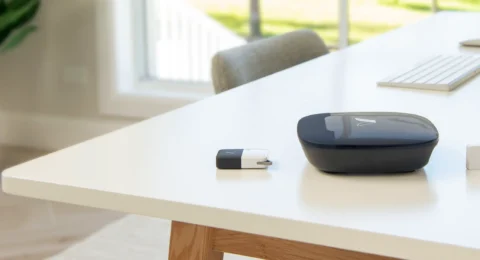 June 26, 2023 Which Home Security Kit is Right for You? Part 1 We've always believed that everyone deserves reliable, secure, and professional-grade security products without high upfront costs or long-term contracts. That's why we now offer three...
June 26, 2023 Which Home Security Kit is Right for You? Part 1 We've always believed that everyone deserves reliable, secure, and professional-grade security products without high upfront costs or long-term contracts. That's why we now offer three... 
